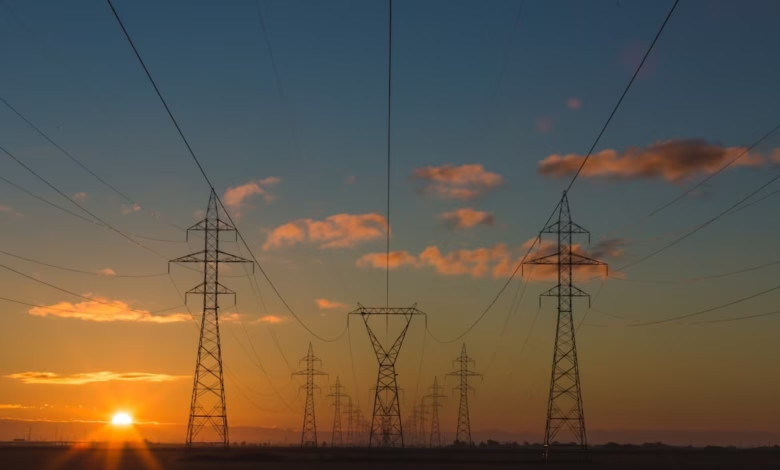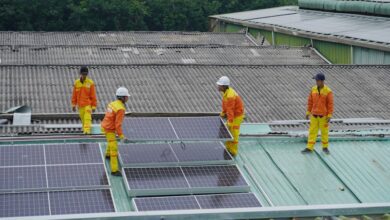Navigating Energy Innovations: How Renewable Energy and Efficient Solutions Combat Climate Change

In the face of escalating climate change, the role of energy has never been more critical. As global temperatures rise and extreme weather events become increasingly frequent, the energy landscape is undergoing a transformative shift. The choice between fossil fuels and renewable energy sources not only impacts our energy security but also plays a pivotal role in combating global warming. This article delves into the relationship between energy and climate change, examining how different energy sources contribute to greenhouse gas emissions and exploring the potential of green energy solutions.
We will discuss the impact of energy sources on climate change, highlighting the contrasting effects of fossil fuels versus renewable energy options such as solar power, wind energy, and hydropower. Furthermore, we will explore the innovations in energy efficiency and energy storage that are propelling the energy transition forward, including advancements in thermal energy and hydrogen energy. Finally, we will navigate global energy trends and policies that are shaping the future of energy markets in a warmer world, focusing on energy investments, smart grids, and the importance of energy exports and imports. By understanding the complex interplay between energy and climate change, we can work towards a sustainable future that prioritizes energy innovation and environmental stewardship.
- 1. The Impact of Energy Sources on Climate Change: Fossil Fuels vs. Renewable Energy
- 2. Advancing the Energy Transition: Innovations in Energy Efficiency and Storage
- 3. Global Energy Trends and Policies: Navigating the Future of Energy Markets in a Warmer World
1. The Impact of Energy Sources on Climate Change: Fossil Fuels vs. Renewable Energy
The sources of energy we rely on have a profound impact on climate change, primarily due to their varying levels of greenhouse gas emissions. Fossil fuels, including coal, oil, and natural gas, are the leading contributors to global warming. When combusted for energy, they release significant amounts of carbon dioxide (CO2) and other harmful pollutants into the atmosphere. This not only exacerbates climate change but also poses serious threats to energy security and public health.
In contrast, renewable energy sources such as solar power, wind energy, hydropower, and bioenergy offer a more sustainable alternative. These green energy solutions produce little to no emissions during operation, making them essential in the fight against climate change. The energy transition from fossil fuels to renewables is critical for reducing our carbon footprint and achieving energy efficiency. Innovations in energy storage technologies, such as battery systems, enhance the reliability of renewable energy by allowing excess energy to be stored and used during periods of low generation.
Nuclear energy also plays a significant role in reducing emissions, as it provides a stable and large-scale energy source with minimal greenhouse gas output. However, challenges related to energy policy, waste management, and public perception continue to influence its adoption.
The integration of energy innovations, such as smart grids and hydrogen energy, is vital for optimizing energy markets and ensuring efficient energy transportation. These technologies not only improve the management of energy resources but also support the growth of distributed energy systems, enhancing the resilience of energy infrastructure.
As global energy trends shift towards sustainability, investments in renewable energy and energy R&D are crucial. This shift not only addresses the urgent need to combat climate change but also opens up opportunities for energy exports and enhances energy security. By prioritizing energy efficiency and adopting comprehensive energy policies, we can significantly mitigate the effects of climate change and foster a more sustainable energy future.
In summary, while fossil fuels have historically dominated energy markets, the transition to renewable energy sources is essential for combating climate change. This transition, supported by innovative technologies and policies, can lead to a more sustainable and resilient global energy system.
2. Advancing the Energy Transition: Innovations in Energy Efficiency and Storage
The energy transition is a crucial component in the fight against climate change, as it focuses on shifting from fossil fuels to renewable energy sources. Innovations in energy efficiency and storage play a significant role in this transition, enhancing the way we generate, consume, and manage energy.
One of the most promising developments in energy efficiency is the advent of smart grids. These intelligent systems optimize energy distribution by using real-time data to balance supply and demand, reducing waste and lowering costs. By integrating renewable energy sources such as solar power and wind energy, smart grids can facilitate a more sustainable energy market, enhancing energy security and reliability.
Energy storage technologies are also pivotal in advancing the energy transition. As renewable energy sources can be intermittent, effective energy storage solutions, such as batteries and pumped hydropower, are essential for maintaining a stable energy supply. Innovations in energy storage not only improve the efficiency of energy systems but also support the growth of distributed energy resources, enabling local communities to harness and store green energy.
In addition, advancements in thermal energy storage offer a way to efficiently manage energy produced during peak generation times, making it available when demand is high. This capability is crucial for balancing the energy markets and reducing reliance on fossil fuels.
Moreover, investments in hydrogen energy present a unique opportunity for decarbonizing various sectors. As a versatile energy carrier, hydrogen can be utilized in transportation, heating, and industrial processes, potentially replacing fossil fuels in numerous applications.
The application of carbon capture technologies further complements these innovations, allowing for the continued use of fossil fuels while minimizing environmental impacts. By integrating carbon capture with existing power plants, we can transition towards cleaner energy systems without sacrificing energy reliability.
In conclusion, the advancements in energy efficiency and storage are essential for a successful energy transition. By investing in innovative technologies and policies that promote renewable energy, we can mitigate the effects of climate change while fostering a sustainable and secure energy future.
References:
– International Energy Agency. (2023). Energy efficiency. Retrieved from https://www.iea.org/topics/energy-efficiency
– U.S. Department of Energy. (2023). Hydrogen and Fuel Cell Technologies Office. Retrieved from https://www.energy.gov/eere/hydrogen-and-fuel-cells
– National Renewable Energy Laboratory. (2023). Energy storage. Retrieved from https://www.nrel.gov/research/energy-storage.html
– World Resources Institute. (2023). Carbon capture, utilization, and storage (CCUS). Retrieved from https://www.wri.org/initiatives/carbon-capture-utilization-and-storage
3. Global Energy Trends and Policies: Navigating the Future of Energy Markets in a Warmer World
As we navigate the complexities of climate change, understanding global energy trends and policies is essential for shaping a sustainable future. The transition from fossil fuels to renewable energy sources is at the forefront of this evolution, as nations strive to reduce carbon emissions and mitigate global warming. Energy markets are undergoing significant transformations, propelled by advancements in energy efficiency and innovations in energy storage technologies.
Renewable energy sources such as solar power, wind energy, and hydropower are rapidly gaining traction. Governments are implementing energy policies that promote green energy investments, aiming to increase the share of renewables in their energy mix. This shift not only addresses climate change but also enhances energy security by reducing dependence on energy imports and fostering energy independence through domestic energy production.
The rise of distributed energy systems, including community solar projects and microgrids, is changing the landscape of energy transportation and consumption. These systems empower consumers and businesses to generate their own electricity, further driving the energy transition. Additionally, smart grids facilitate better energy management, enabling the integration of renewable energy sources and improving overall energy efficiency.
Nuclear energy continues to play a critical role in the global energy landscape. As nations seek low-carbon alternatives, investment in nuclear technology presents opportunities for stable, thermal energy production. Furthermore, energy R&D is crucial for developing innovative solutions, such as carbon capture technologies and hydrogen energy, which can significantly reduce greenhouse gas emissions.
The shift toward electric vehicles (EVs) is also reshaping energy markets, leading to increased demand for renewable energy and energy storage solutions. Policies that support the adoption of EVs contribute to a reduction in fossil fuel consumption and drive the need for robust energy infrastructure.
To successfully navigate these global energy trends, governments and businesses must collaborate on effective energy policies that encourage energy investments while promoting sustainability. By focusing on energy innovations and fostering a diverse energy portfolio that includes fossil fuels, renewables, and nuclear energy, the world can move towards a resilient energy future that addresses the challenges posed by climate change.
In conclusion, the role of energy in combating climate change cannot be overstated. As we have explored, the impact of various energy sources on global warming highlights a critical need for a shift away from fossil fuels towards renewable energy alternatives such as solar power, wind energy, and hydropower. The ongoing energy transition is not just about reducing carbon emissions; it also encompasses innovations in energy efficiency and storage, which are essential for enhancing energy security and optimizing energy markets.
As global energy trends evolve, the implementation of smart grids, energy exports, and advanced energy R&D will play pivotal roles in shaping a sustainable future. Furthermore, policies promoting energy investments in nuclear energy, bioenergy, and hydrogen energy can accelerate the transition to a low-carbon economy. By embracing energy innovations and focusing on sustainable solutions, we can navigate the complexities of energy economics while mitigating the impacts of climate change. The path forward requires a collaborative effort in adapting energy policies and fostering a commitment to green energy practices, ensuring a healthier planet for future generations.





